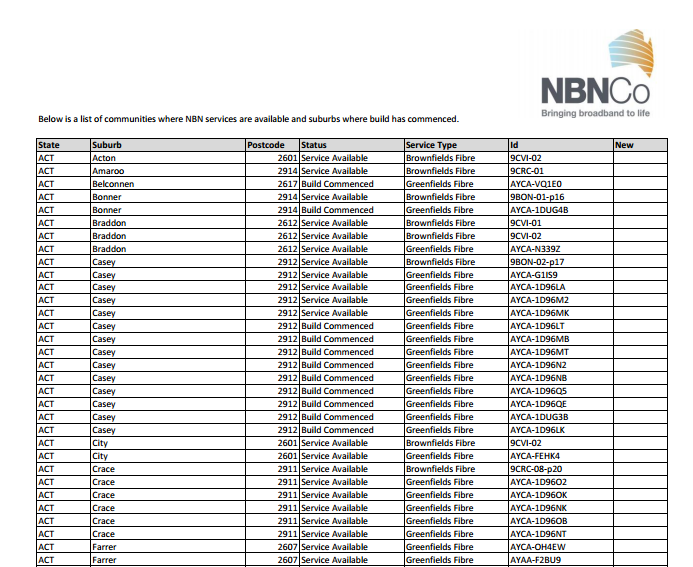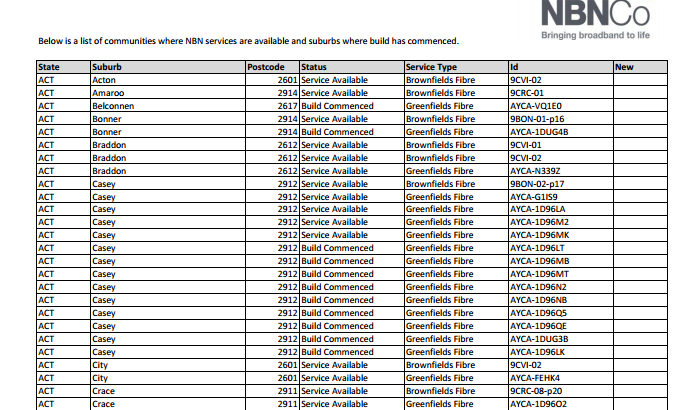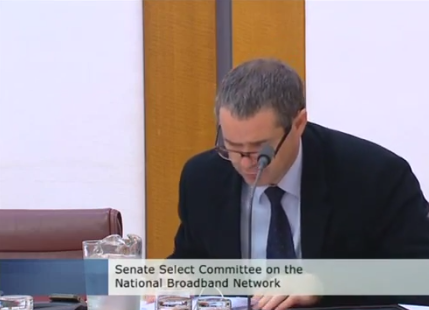For a Government that criticised the former NBN Co management for not being transparent enough while in opposition, NBN Co is faring quite poorly to date under this new Government and new management… especially in the accessibility of information.
We’ve seen improvements and streamlining of metrics – moves I’m truly supportive of and commend. At the same time, however, we’re seeing a massive shift in information culture from NBN Co… and for the most part, it has left my head scratching. While I’m supportive of the publications of the weekly rollout metrics and the monthly rollout regions list, they’re both published in such a way that’s completely inaccessible and non-manipulable.
Take the 82 page long monthly rollout regions list, for example. For a list of that magnitude, NBN Co chose to publish the information in a PDF document… of all formats. If you compare this to other telecommunications providers, be-it Telstra (locally) or BT/Openreach (UK), they all use formats that make sense in the context. Long lists will always be published in an accessible format like an Excel spreadsheet or a CSV (comma-separated values) spreadsheet. The whole point of having these files is to be able to do quick filters, quick calculations and a quick understanding or overview of the rollout. But NBN Co’s illogical choice to use the PDF format defeats the whole purpose of the file. The irony in all of this is that the PDF file was exported from Microsoft Excel… yes, it was an Excel document to start with!

Likewise, the weekly rollout metrics is published in a PDF file – again. Having a grid of figures in a closed and inaccessible format is another layer of inconvenience deliberately designed by NBN Co for people who actually want to make use of the data. Your ordinary Australian is not going to go onto the NBN Co website to see how many premises were activated last week… that information is intended at analysts and for meeting Government objectives. But how is a PDF document of numbers a convenient format for analysts and followers of the NBN? The answer: it isn’t.
What we’re seeing from NBN Co is something quite unusual (in industry terms). On one hand, Government directives want them to be more transparent… on the other, they make it as inconvenient and as hard as possible for anyone to get anything useful out of the data they publish.
I still haven’t covered the data they’ve removed from their website, or the completely closed off spatial for network boundaries. Transparency at NBN Co can be improved so much if they just made data available to people in the format that is most logical for the intended audience… and PDF is clearly not here.
In my honest opinion, the culture of transparency has worsened at NBN Co, and I’m worried that it will only continue to deteriorate.

